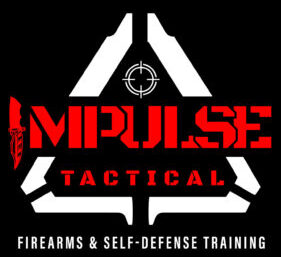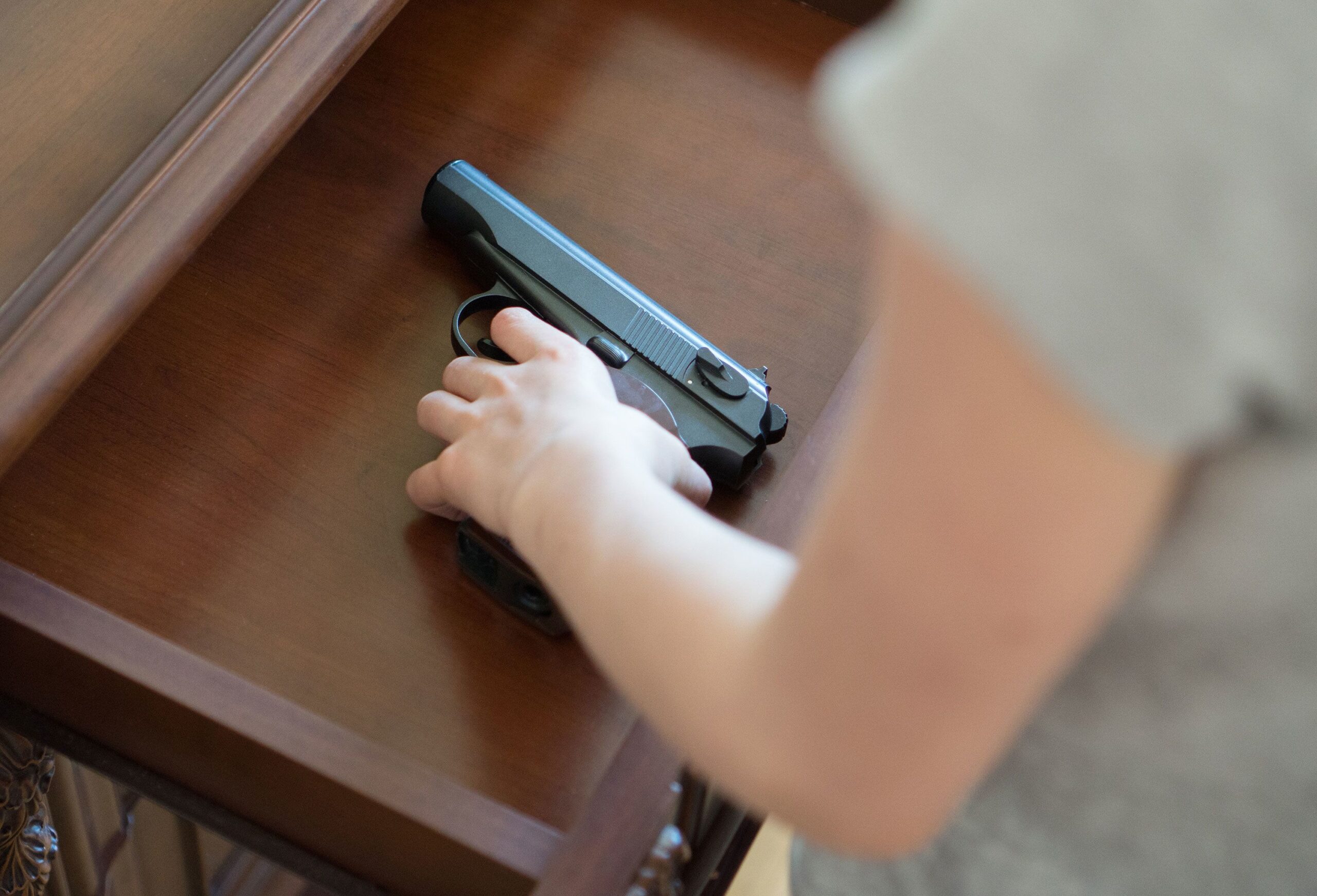
Beginner’s Guide to the Handgun
Everything a Beginner Needs to Know About a Handgun
So you’re looking for information about handguns and it’s all over the place. Look no further as it’s right here. We will educate you at the most basic level of handgun anatomy, ammunition, firearm cleaning, laws, storage, and safety.
As a first-time handgun owner, it’s crucial to understand that owning a firearm comes with significant responsibilities. Here’s some essential advice:
- Safety First: Always treat your firearm as if it’s loaded, even if you believe it’s not. Keep your finger off the trigger until you’re ready to shoot, and always point the gun in a safe direction.
- Familiarize Yourself with Your Firearm: Learn how to safely handle, load, unload, and operate your handgun. Read the owner’s manual thoroughly and consider taking a certified firearms safety course for hands-on instruction.
- Secure Storage: Store your handgun securely, preferably in a locked safe or cabinet, away from unauthorized access, especially children or individuals who shouldn’t handle firearms.
- Know the Law: Familiarize yourself with the laws and regulations regarding firearm ownership, possession, transportation, and use in your area. Stay updated on any changes in legislation.
- Practice Regularly: Shooting is a skill that requires practice to maintain proficiency. Consider regular trips to the shooting range to hone your skills and familiarize yourself with your firearm.
- Understand the Consequences: Recognize that owning a gun means you have the potential to cause harm. Understand the legal, moral, and ethical implications of using lethal force in self-defense situations.
- Be Responsible: Never use your firearm under the influence of alcohol or drugs. Additionally, be mindful of where and how you discharge your firearm, ensuring you’re in a safe environment.
- Seek Additional Training: Consider taking advanced firearms training courses to improve your skills and knowledge. Training in defensive shooting, situational awareness, and conflict resolution can be invaluable. Check out and schedule a course now!
- Join a Community: Connect with other responsible gun owners through local gun clubs or online forums. Learning from experienced individuals can provide valuable insights and support.
- Stay Informed: Keep up-to-date with developments in firearm technology, safety practices, and legal issues. Continuous learning is essential for responsible gun ownership.
Remember, owning a handgun is a significant responsibility that should not be taken lightly. Prioritize safety, education, and adherence to the law to ensure a positive and safe experience as a gun owner.
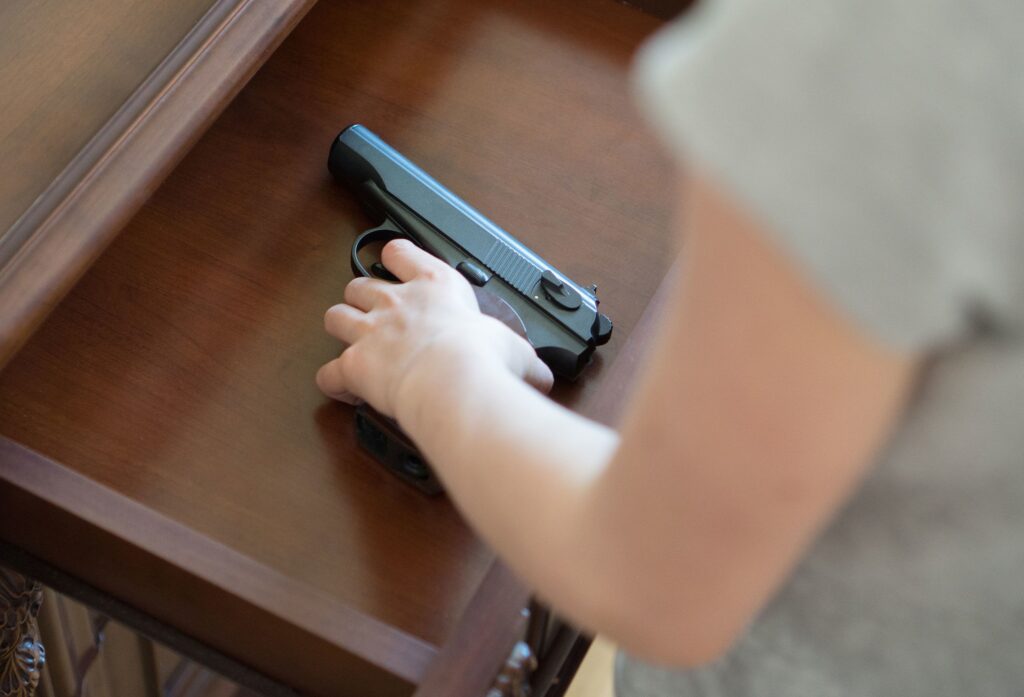
Firearm Safety FIRST
Certainly, safety is paramount when it comes to owning a firearm. Here’s a more detailed breakdown of key safety aspects:
- Treat Every Firearm as if it’s Loaded: Regardless of whether you believe a gun is unloaded, always treat it as if it’s loaded. This mindset helps prevent accidents caused by mishandling or negligence.
- Keep Your Finger Off the Trigger: Until you’re ready to shoot, keep your finger off the trigger and outside the trigger guard. This prevents accidental discharges, especially in high-stress situations.
- Always Point the Muzzle in a Safe Direction: The muzzle of the firearm should always be pointed in a direction where an accidental discharge would cause minimal or no harm, often referred to as a “safe direction.” Never point a firearm at anything you don’t intend to shoot.
- Be Aware of Your Target and What’s Beyond: Before firing, always be sure of your target and what lies beyond it. Bullets can penetrate through objects and continue traveling, posing a risk to unintended targets.
- Use Proper Ammunition: Ensure you’re using the correct caliber and type of ammunition specified for your firearm. Using incorrect ammunition can cause malfunctions or even catastrophic failures.
- Store Safely and Securely: When not in use, store your firearm in a secure location, such as a locked safe or cabinet. Consider using trigger locks or cable locks for additional security, especially if you have children or unauthorized individuals in your household.
- Practice Proper Handling and Operation: Familiarize yourself with the operation of your firearm through practice and training. This includes safely loading and unloading, as well as clearing malfunctions.
- Avoid Alcohol and Drugs: Never handle a firearm if you are under the influence of alcohol, drugs, or any substance that may impair your judgment or coordination.
- Wear Eye and Ear Protection: When shooting, always wear appropriate eye and ear protection to safeguard against potential injury from flying debris and loud noises.
- Regular Maintenance: Keep your firearm clean and properly maintained to ensure it functions safely and reliably. Follow manufacturer guidelines for cleaning and maintenance procedures.
By strictly adhering to these safety principles and continuously practicing safe handling techniques, you significantly reduce the risk of accidents and ensure a safe environment for yourself and those around you. Safety should always be the top priority in every aspect of firearm ownership and use.
Safe Handling of a Firearm
Properly and safely handling a handgun involves following a set of disciplined procedures to ensure the firearm is always under your control and poses no risk to yourself or others. Observing and getting hands-on experience under instruction is ideal for safe and secure gun operation and handling. Get involved with an Essential Handgun class. Here’s a step-by-step guide for operating and loading/unloading a handgun safely:
- Prepare a Safe Environment: Before handling your handgun, ensure you’re in a safe environment. Ensure the firearm is unloaded, and there is no ammunition nearby. Also, ensure you have sufficient space to handle the firearm without obstruction.
- Grip the Firearm Correctly: With your dominant hand, grasp the handgun firmly, wrapping your fingers around the grip. Keep your trigger finger indexed along the frame of the firearm, away from the trigger guard. Use your non-dominant hand to support the firearm, forming a two-handed grip for stability.
- Point the Muzzle in a Safe Direction: Always ensure the muzzle of the handgun is pointed in a safe direction, away from yourself and others. This means pointing it toward the ground or a safe backstop.
- Engage Safety Mechanisms (if applicable): If your handgun is equipped with a safety mechanism, ensure it is engaged (if desired) before proceeding with any further steps.
- Check the Chamber: Before handling a firearm, always visually and physically inspect the chamber to ensure it’s empty. Lock the slide back (if applicable) and visually inspect the chamber to ensure no rounds are present. Run your finger along the chamber to verify it’s clear.
- Load the Firearm: To load the firearm, insert a loaded magazine into the magazine well until it clicks into place. Then, release the slide (if necessary) to chamber a round. Use the slide release or pull the slide rearward and release it to allow the slide to move forward, chambering a round.
- Unload the Firearm: To unload the firearm, first, remove the magazine by pressing the magazine release button and pulling the magazine out of the grip. Next, lock the slide to the rear to visually and physically inspect the chamber, ensuring it’s empty. Finally, release the slide forward to complete the unloading process.
- Store the Firearm Safely: Once you’ve finished handling the handgun, ensure it’s stored safely and securely. Store the firearm unloaded, with ammunition stored separately in a locked container or safe, especially if there are children or unauthorized individuals in your household.
- Practice Regularly: Familiarize yourself with these procedures through regular practice and training sessions. Repetition is key to building safe handling habits and maintaining proficiency with your handgun.
By following these steps diligently and consistently, you can ensure that you handle your handgun safely and responsibly, minimizing the risk of accidents and promoting a safe shooting environment for yourself and those around you.
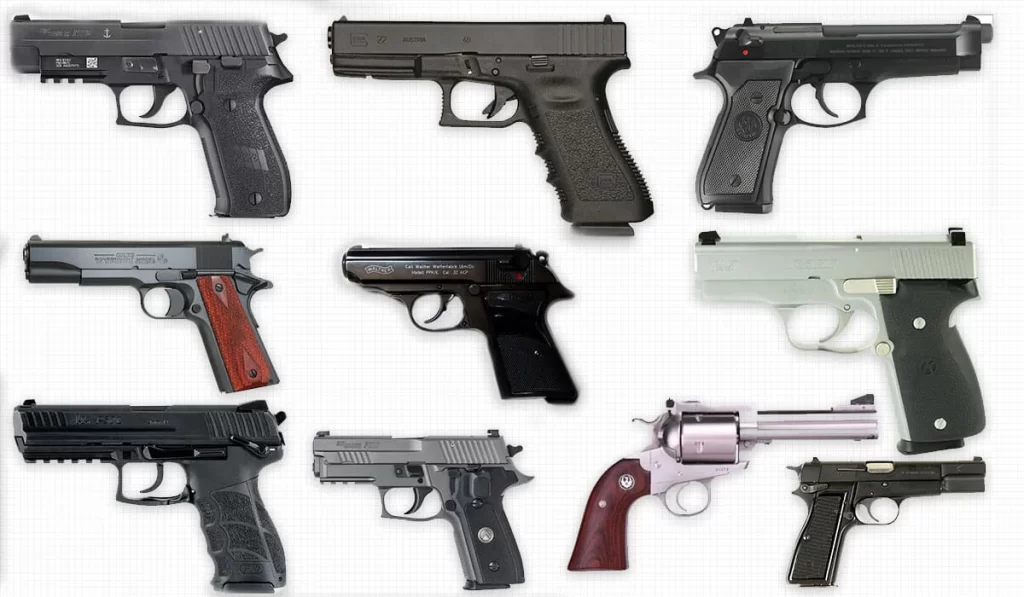
Types of Handguns
The terms “pistol” and “revolver” are often used interchangeably, but they refer to different types of handguns with distinct operating mechanisms:
- Pistol:
- A pistol is a type of handgun that typically features a semi-automatic action.
- Semi-automatic pistols use the energy from the fired cartridge to eject the spent casing, cock the hammer or striker, and chamber the next round.
- Pistols have a magazine that holds multiple cartridges and is inserted into the grip of the firearm.
- Examples of pistols include the Glock, Smith & Wesson M&P, and 1911.
- Revolver:
- A revolver is a type of handgun that uses a rotating cylinder to hold multiple cartridges.
- Revolvers are typically either single-action or double-action.
- In a single-action revolver, the shooter must manually cock the hammer before each shot, while in a double-action revolver, pulling the trigger both cocks and releases the hammer.
- The cylinder of a revolver rotates to align each chamber with the barrel for firing.
- Revolvers do not have a magazine; cartridges are loaded individually into each chamber of the cylinder.
- Examples of revolvers include the Smith & Wesson Model 686, Colt Python, and Ruger SP101.
In summary, the main difference between a pistol and a revolver lies in their operating mechanisms: pistols are semi-automatic handguns with a magazine, while revolvers use a rotating cylinder to hold cartridges and do not have a magazine. Each type of handgun has its advantages and disadvantages, and the choice between them often comes down to personal preference, intended use, and specific features desired by the shooter.
Single Actions vs Double Action
The primary difference between single action (SA) and double action (DA) handguns lies in how the trigger operates the firing mechanism of the firearm. Most pistols or handguns are double action nowadays. Older “Wild West” revolvers were typically single action but only a few single action handguns are still manufactured today such as the Springfield 1911. Here’s an explanation of each:
Single Action (SA):
- In a single action handgun, pulling the trigger performs only one action: releasing the hammer or striker to strike the firing pin or primer.
- Before firing, the hammer or striker must be manually cocked (either by the shooter or by some external action like racking the slide) to prepare the firearm for a shot.
- Examples of single action handguns include many traditional revolvers and some semi-automatic pistols like the Colt 1911.
- The trigger becomes a “hair trigger” once the hammer becomes cocked making it extremely easy to fire.
Double Action (DA):
- In a double action handgun, pulling the trigger performs two actions: cocking the hammer or striker and then releasing it to fire the cartridge.
- The trigger pull both cocks the hammer or striker and then releases it in one continuous motion.
- Double action handguns offer the advantage of being able to fire without manually cocking the hammer or striker, allowing for quicker follow-up shots.
- Some double action handguns may also have the option of manually cocking the hammer or striker for a lighter trigger pull, essentially functioning as a single action firearm for subsequent shots.
- Examples of double action handguns include many revolvers and semi-automatic pistols like the Smith & Wesson M&P series and Glock pistols with double action triggers.
Additionally, there are variations like single-action/double-action (SA/DA) handguns, which offer both modes of operation. These firearms can be fired in double action mode for the first shot (which includes cocking and releasing the hammer or striker with one trigger pull), and then subsequent shots are fired in single action mode (where the hammer or striker is cocked manually for each shot). This provides versatility in shooting preferences and scenarios.
Parts of a Semi-Automatic Pistol
A semi-automatic pistol typically consists of several main parts:
- Frame: The frame is the main body of the pistol, which houses the firing mechanism, trigger assembly, and magazine well. It provides the structure and housing for the other components.
- Slide: The slide is a moveable outer casing that houses the barrel, recoil spring, and firing pin assembly. It reciprocates back and forth during the firing cycle, extracting and ejecting spent casings and loading fresh rounds from the magazine into the chamber.
- Barrel: The barrel is the metal tube through which the bullet travels when fired. It is fixed to the frame or, in some designs, may be removable for maintenance purposes.
- Recoil Spring: The recoil spring is a heavy spring located inside the slide that absorbs the recoil energy generated when the gun is fired. It helps to cycle the slide and return it to its firing position after each shot.
- Firing Pin: The firing pin is a small metal rod or pin that strikes the primer of the cartridge when the trigger is pulled, igniting the gunpowder and firing the bullet.
- Trigger Assembly: This includes the trigger, trigger bar, sear, and other components that enable the firing mechanism. When the trigger is pulled, it releases the sear, allowing the firing pin to strike the primer.
- Magazine: The magazine is a container that holds multiple rounds of ammunition in a spring-loaded mechanism. It is inserted into the grip of the pistol and feeds rounds into the chamber as the gun is fired.
- Sights: Sights are devices mounted on the top of the pistol, used to aim the firearm. They typically consist of a front sight and a rear sight, which are aligned to help the shooter aim accurately.
- Grip: The grip is the handle of the pistol, designed to be held by the shooter’s hand. It may have textured surfaces or ergonomic features to improve grip and control.
These are the main parts found in most semi-automatic pistols, though specific designs may vary slightly in terms of their internal mechanisms or features.
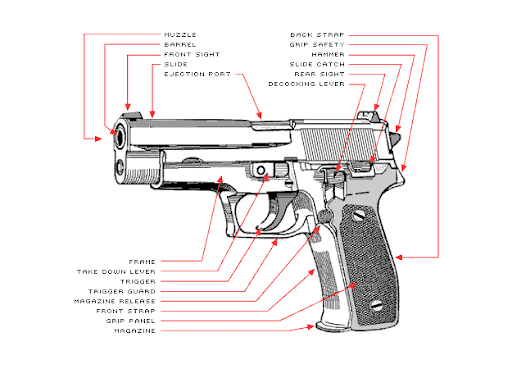
Parts of a Revolver
A revolver handgun typically consists of several key components, each playing a vital role in its operation. Here are the main parts of a revolver handgun:
- Frame: The frame is the central component of the revolver, serving as the housing for all other parts. It provides structural support and houses the trigger mechanism.
- Barrel: The barrel is the cylindrical tube through which the bullet travels when fired. It’s typically located at the front of the firearm and is responsible for guiding the bullet’s trajectory.
- Cylinder: The cylinder is a rotating component that holds multiple chambers, each containing a cartridge. When the trigger is pulled, the cylinder rotates, aligning a chamber with the barrel to allow firing.
- Chambers: Chambers are the individual compartments within the cylinder where cartridges are loaded. Revolvers can have varying numbers of chambers, depending on the model and caliber.
- Ejector Rod: The ejector rod is a metal rod located under the barrel of the revolver. It is used to manually extract spent cartridge cases from the cylinder after firing by pushing them out through the cylinder’s rear-facing openings (charge holes).
- Hammer: The hammer is a protruding component located at the rear of the revolver. When the trigger is pulled, the hammer strikes the firing pin, initiating the ignition of the cartridge primer and firing the bullet.
- Trigger: The trigger is the lever located within the trigger guard that initiates the firing sequence when pulled. When the trigger is pulled, it releases the hammer, allowing it to strike the firing pin.
- Trigger Guard: The trigger guard is the protective housing surrounding the trigger mechanism. It helps prevent accidental discharge by providing a barrier around the trigger.
- Grips: Grips are the handle panels attached to the frame of the revolver, providing a comfortable and secure grip for the shooter. Grips can be made from various materials, including wood, plastic, or rubber.
- Sights: Sights are aiming devices mounted on the top of the revolver’s frame or barrel. They aid the shooter in aligning the firearm with the target for accurate aiming and shooting.
Understanding the function and interaction of these components is essential for safe and effective operation of a revolver handgun. Regular maintenance and familiarity with your firearm’s parts will ensure reliable performance and safe handling.

Firearm Ammunition
Handguns are capable of firing various types of ammunition, each designed for different purposes. Here are some common types of handgun ammunition:
- Full Metal Jacket (FMJ): This is one of the most common types of ammunition. FMJ bullets have a soft metal core (usually lead) encased in a harder metal jacket, typically made of copper. They are designed for target shooting, training, and general-purpose use.
- Hollow Point (HP): Hollow point bullets have a concave shape at the tip, which causes them to expand upon impact. This expansion creates a larger wound channel, making hollow points more effective for self-defense and law enforcement use. They are designed to maximize stopping power and minimize overpenetration.
- Jacketed Hollow Point (JHP): Jacketed hollow points are similar to hollow points but have a metal jacket surrounding the lead core. This design enhances penetration and ensures reliable expansion upon impact. JHP ammunition is commonly used for self-defense purposes.
- Soft Point (SP): Soft point bullets have an exposed lead tip, with the rest of the bullet jacketed. They offer better expansion than FMJ rounds but less expansion than hollow points. Soft point ammunition is often used for hunting because it delivers controlled expansion and deep penetration.
- Wadcutter (WC): Wadcutter bullets have a flat front and are often used in target shooting competitions. They leave clean, precise holes in paper targets, making them popular among competitive shooters.
- Shotshell: Shotshells are cartridges loaded with small pellets (shot) or a single large projectile (slug). They are primarily used in handguns designed for close-range pest control, snake shot, or as a less-lethal option for self-defense.
- Frangible: Frangible bullets are made from compressed powder or sintered metal and are designed to disintegrate upon impact with hard surfaces. They are used in scenarios where overpenetration is a concern, such as indoor shooting ranges or close-quarters self-defense situations.
- Tracer: Tracer rounds have a pyrotechnic charge in the base that ignites upon firing, leaving a visible trace of the bullet’s trajectory. Tracer ammunition is primarily used for training and can be helpful in adjusting aim or observing bullet drop over distance.
These are just some of the common types of handgun ammunition available. The choice of ammunition depends on factors such as intended use (self-defense, target shooting, hunting), environmental considerations, and legal restrictions. It’s essential to select ammunition appropriate for your firearm and intended purpose and to follow all safety guidelines and legal regulations.
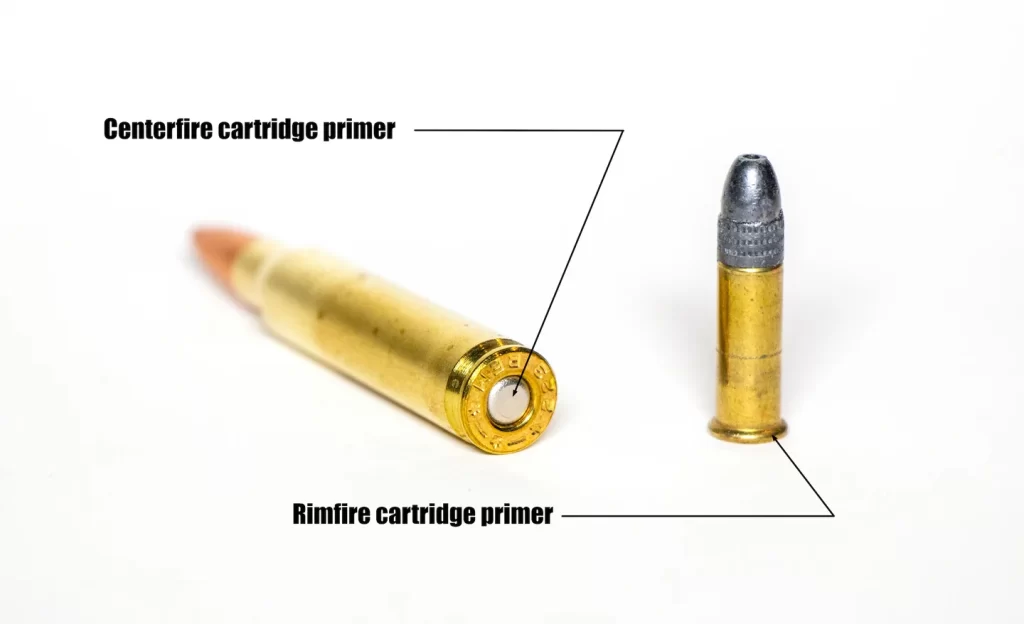
Definition of Caliber
The caliber of handgun ammunition refers to the diameter of the bullet and the inner diameter of the barrel of the firearm it is designed to be fired from. The caliber is typically measured in either inches or millimeters. Here are some common calibers for handguns and their differences:
- .22 LR (Long Rifle): This is one of the smallest and lightest calibers commonly used in handguns. It’s popular for target shooting, plinking, and small game hunting due to its low recoil and relatively low cost.
- 9mm: Also known as 9x19mm Parabellum or 9mm Luger, this is one of the most popular handgun calibers worldwide. It offers a good balance of stopping power, manageable recoil, and magazine capacity, making it suitable for self-defense, law enforcement, and target shooting.
- .357 Magnum: This is a powerful revolver cartridge known for its high velocity and stopping power. It’s commonly used in revolvers for self-defense, hunting, and law enforcement applications.
- .40 S&W (Smith & Wesson): Developed as a law enforcement cartridge, .40 S&W offers more power than 9mm while still allowing for manageable recoil. It’s used in both semi-automatic pistols and some subcompact and compact handguns.
- .45 ACP (Automatic Colt Pistol): This is a large, heavy bullet with relatively low velocity but significant stopping power. It’s popular among enthusiasts and professionals for its effectiveness in self-defense and law enforcement roles.
- .38 Special: Another popular revolver cartridge, .38 Special is known for its manageable recoil and versatility. It’s commonly used for self-defense, target shooting, and in some cases, concealed carry.
- .44 Magnum: This is a powerful and high-recoil revolver cartridge primarily used for hunting, handgun hunting, and as a backup sidearm for outdoorsmen in areas where dangerous wildlife is a concern.
- 10mm Auto: Originally developed for the FBI, 10mm Auto offers high velocity and stopping power. It’s used in both semi-automatic pistols and some hunting handguns for self-defense and hunting purposes.
These are just a few examples of handgun calibers, and there are many more available, each with its own characteristics and intended uses. When selecting a handgun caliber, factors such as intended use, recoil tolerance, ammunition availability, and personal preference should all be considered.
Handgun vs a Long Gun: What’s the difference?
A handgun is a firearm designed to be operated and fired with one hand. It typically has a relatively compact size compared to long guns (rifles and shotguns), making it easier to carry and handle. Handguns come in various forms, including revolvers and semi-automatic pistols, and are commonly used for self-defense, law enforcement, military, recreational shooting, and hunting. They usually have a barrel length shorter than 16 inches and are intended to be fired while held in one hand, although some models may support two-handed shooting techniques. Handguns are subject to specific legal regulations and restrictions in many jurisdictions.
The main differences between a handgun and a long gun lie in their design, size, and typical usage:
Design and Size:
- Handgun: Handguns are designed to be operated and fired with one hand. They typically have shorter barrels and overall lengths compared to long guns, making them more compact and easier to carry in holsters or concealed.
- Long Gun: Long guns are designed to be shouldered and fired with both hands. They usually have longer barrels and stocks, providing better accuracy and stability when aiming. Long guns include rifles and shotguns.
Usage:
- Handgun: Handguns are often used for self-defense, concealed carry, law enforcement, and as backup weapons. They are also popular for recreational shooting, target practice, and competitions.
- Long Gun: Long guns are commonly used for hunting, sport shooting, marksmanship competitions, and in military and law enforcement applications. They offer greater accuracy and stopping power over longer distances compared to handguns.
Firing Mechanisms:
- Handgun: Handguns can have various firing mechanisms, including revolvers and semi-automatic pistols. Revolvers have a rotating cylinder that holds cartridges, while semi-automatic pistols use a sliding action to load the next round from a detachable magazine.
- Long Gun: Long guns typically have more diverse firing mechanisms, including bolt action, lever action, pump action, and semi-automatic. These mechanisms vary in how they chamber and fire cartridges and can offer different rates of fire and reloading methods.
Legal Considerations:
- Handgun: Handguns are subject to specific legal regulations and restrictions in many jurisdictions, particularly regarding ownership, carrying, and purchasing. Background checks and permits may be required to own or carry a handgun.
- Long Gun: Long guns are also subject to legal regulations but may have different requirements depending on the jurisdiction. In some places, long guns may have fewer restrictions compared to handguns, particularly regarding ownership and carrying.
Overall, while handguns and long guns share some similarities as firearms, they serve different purposes, have distinct designs, and are subject to different legal frameworks.
Permits and Licensure:
The requirement for permits or licenses for firearms, besides handguns, varies significantly depending on the country, state/province, and sometimes even city or locality. Here’s a general overview:
1. Long Guns:
- In some jurisdictions, there are no permits required to purchase or own most long guns (rifles and shotguns). Individuals can typically buy long guns from licensed firearms dealers after passing a background check.
- However, in certain regions, there may be permits or licenses required for specific types of long guns, such as certain semi-automatic rifles or high-capacity shotguns.
- It’s essential to check local firearms laws and regulations to understand any permit requirements for long guns in your area.
2. Special Categories:
- Some jurisdictions may require permits or licenses for certain types of firearms beyond handguns and long guns. This could include firearms such as fully automatic weapons, short-barreled rifles or shotguns, or other restricted categories.
- In many cases, ownership of these firearms may be heavily regulated, requiring extensive background checks, approval from law enforcement agencies, and compliance with additional requirements.
3. Storage and Transportation:
- Even in areas where no permits are required to own long guns, there may be regulations regarding the storage and transportation of firearms. This could include requirements for safely storing firearms when not in use and rules for transporting firearms in vehicles.
4. Background Checks:
- Regardless of permit requirements, background checks are often mandatory for purchasing firearms, including long guns, from licensed dealers in many jurisdictions. These checks are typically conducted through the National Instant Criminal Background Check System (NICS) in the United States or similar systems in other countries.
5. Exceptions:
- There may be exceptions to permit requirements for certain categories of individuals, such as law enforcement officers, military personnel, or individuals with specific occupational needs. Additionally, there may be exemptions for antique firearms or firearms held for historical or collector purposes.
It’s crucial to thoroughly research and understand the firearms laws and regulations in your area to ensure compliance with all legal requirements regarding permits, licenses, ownership, storage, and transportation of firearms. Laws and regulations can vary widely between different jurisdictions, so what applies in one location may not necessarily apply in another.
Traveling with a Firearm
Traveling with a firearm requires careful planning to ensure safety and compliance with legal regulations. PLEASE NOTE: If you DO NOT HAVE A CONCEALED CARRY PERMIT, do not have a loaded firearm in your vehicle, especially on your person (open carry). A loaded, or even an unloaded firearm not properly stowed can be considered a concealed weapon once you enter your vehicle. Store it properly to avoid legal ramifications.
Resources on where you can take your firearm and where you cannot can be found HERE.
Here are steps to help you travel with your firearm safely and legally:
- Research Laws and Regulations: Before traveling with your firearm, thoroughly research the firearms laws and regulations of the places you will be visiting. This includes federal, state/provincial, and local laws. Pay attention to regulations regarding firearm transportation, possession, and carrying in both your departure and destination locations.
- Check Airline Policies: If you’re traveling by air, review the policies of your airline regarding firearms transportation. Airlines have specific rules and procedures for checking firearms as baggage. Contact the airline in advance to understand their requirements and any necessary paperwork.
- Use a Lockable Gun Case: When traveling with a firearm, always transport it in a lockable gun case or container specifically designed for firearms. Ensure the case is sturdy, secure, and lockable with a key or combination lock. The case should fully enclose the firearm and prevent unauthorized access.
- Unload and Secure the Firearm: Before packing your firearm, ensure it is unloaded. Remove all ammunition from the firearm and pack it separately from the firearm itself. Double-check to confirm that the firearm’s chamber and magazine are empty. Secure the firearm in the gun case to prevent movement or damage during transportation.
- Follow Transportation Regulations: Adhere to all transportation regulations regarding the handling and declaration of firearms. This may include notifying transportation authorities or airline staff about your firearm during check-in and following specific procedures for declaring firearms as checked baggage.
- Carry Necessary Documentation: Carry all required documentation for your firearm, including permits, licenses, registration certificates, and any other relevant paperwork. Make copies of these documents and keep them separate from the originals. Be prepared to present these documents if requested by authorities.
- Plan Your Route: Plan your travel route in advance to avoid areas where firearms possession may be restricted or prohibited. Be aware of any potential legal issues or challenges you may encounter while transporting your firearm through different jurisdictions.
- Store Safely at Your Destination: Upon arrival at your destination, store your firearm securely in accordance with local laws and regulations. This may include keeping it locked in a safe or secure storage location when not in use.
- Know Your Rights and Responsibilities: Familiarize yourself with your rights and responsibilities as a firearm owner and traveler. Be prepared to comply with law enforcement instructions and cooperate with authorities if questioned about your firearm during your travels.
- Stay Informed and Updated: Stay informed about any changes to firearms laws and regulations in your area and the places you plan to visit. Keep up-to-date with any updates or advisories from relevant authorities regarding firearm transportation and possession.
By following these steps and exercising caution and diligence, you can travel with your firearm safely and legally while minimizing the risk of legal issues or complications. Always prioritize safety, compliance with regulations, and responsible firearm handling practices when traveling with a firearm.
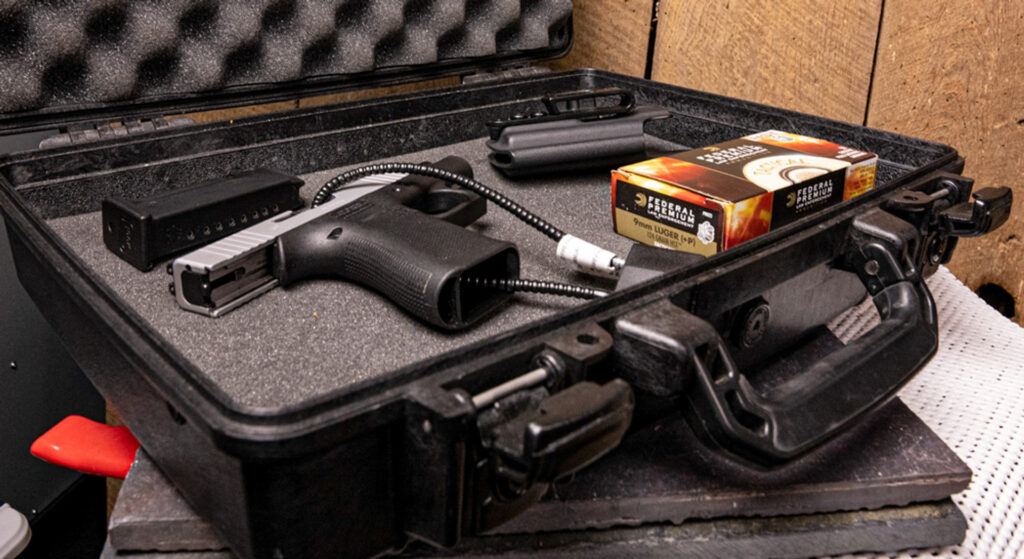
How to Clean Your Firearm
Cleaning your pistol properly is essential for maintaining its performance, reliability, and longevity. This LINK is for a generalized video on cleaning your pistol. Here’s a general guide on how to clean your pistol:
1. Gather Your Cleaning Supplies:
- Gun cleaning solvent or oil
- Bore brush (appropriate caliber)
- Cleaning patches or cloth
- Cleaning rod or bore snake
- Nylon or brass cleaning brush
- Toothbrush or small brush for detail cleaning
- Cotton swabs
- Gun lubricant or oil
- Gun cleaning mat or cloth to protect your work surface
2. Ensure Safety:
- Before starting, ensure your firearm is unloaded. Remove the magazine (if applicable) and visually and physically inspect the chamber to ensure it is empty. Engage the safety mechanism if your pistol has one. Most firearm accidents happen when people “think” the firearm is unloaded!
3. Disassembly:
- Disassemble your pistol according to the manufacturer’s instructions. Refer to your firearm’s manual for specific disassembly steps.
- Remove the slide, barrel, recoil spring, and other easily removable parts.
3. Clean the Barrel:
- Attach the appropriate caliber bore brush to the cleaning rod.
- Apply gun cleaning solvent or oil to the bore brush.
- Insert the bore brush into the barrel from the chamber end and push it through several times to loosen fouling and debris.
- Remove the bore brush and attach a cleaning patch or cloth to the cleaning rod.
- Run the cleaning patch through the barrel to remove loosened debris. Repeat with clean patches until they come out clean.
- Inspect the barrel to ensure it is clean and free of fouling.
4. Clean the Slide and Frame:
- Use a nylon or brass cleaning brush dipped in solvent to scrub the slide, frame, and other metal parts of the pistol.
- Pay attention to areas prone to fouling, such as the breech face, extractor, and rails.
- Use cotton swabs or a toothbrush to clean hard-to-reach areas and crevices.
5. Clean and Lubricate Moving Parts:
- Apply a small amount of gun lubricant or oil to moving parts such as the slide rails, barrel hood, and trigger mechanism.
- Use a cotton swab or cloth to apply lubricant sparingly and wipe off any excess.
6. Reassembly:
- Reassemble your pistol in the reverse order of disassembly. Ensure all parts are properly aligned and seated.
7. Function Check:
- Perform a function check to ensure your pistol is operating correctly after reassembly. Check the trigger, slide, and safety (if applicable) to ensure they function properly.
8. Final Inspection:
- Once reassembled, visually inspect your pistol to ensure it is clean, lubricated, and free of any visible debris.
Regular cleaning and maintenance are crucial for keeping your pistol in optimal condition. Follow these steps regularly after shooting sessions or as recommended by the manufacturer to ensure the reliability and performance of your firearm.
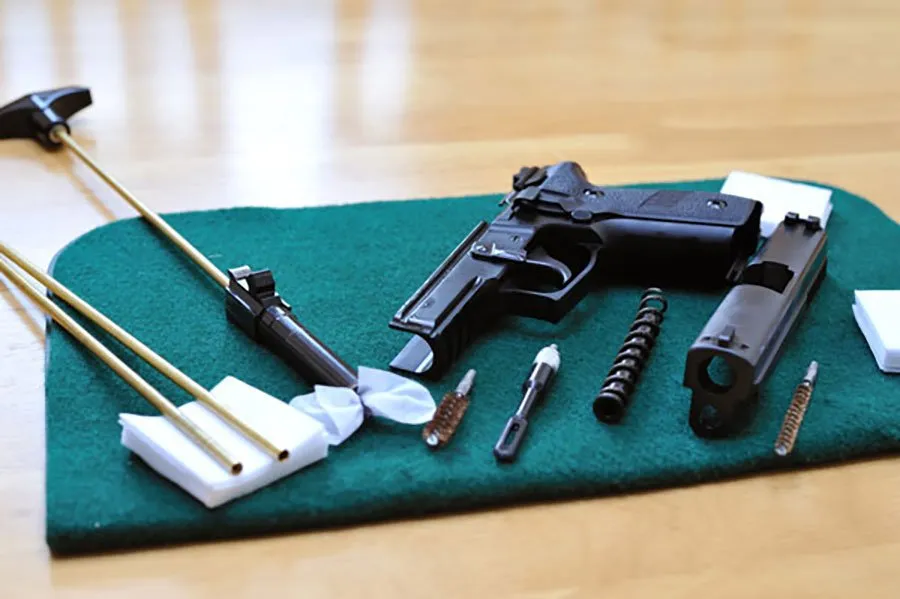
Firearm and Handgun Laws
Owning a firearm comes with important responsibilities, including understanding and adhering to applicable laws and regulations, ensuring safety, and maintaining proficiency in handling and storage. Get your legal resources and free concealed carry guide HERE!
Below are some basics of owning a firearm:
Know and Understand Applicable Laws and Regulations:
- Familiarize yourself with federal, state/provincial, and local laws regarding firearm ownership, possession, transportation, and use.
- Understand requirements for purchasing firearms, obtaining permits or licenses, and registering firearms in your jurisdiction.
- Stay informed about any changes or updates to firearms laws and regulations that may affect you as a gun owner.
Safety First:
- Always treat every firearm as if it is loaded, even if you know it is unloaded.
- Keep firearms securely stored and inaccessible to unauthorized individuals, especially children. If your firearm is easily accessible by ANYONE other than yourself, you can be held liable for the damage it incurs! Keep it locked and or hidden!Follow the basic rules of firearm safety, including keeping your finger off the trigger until ready to shoot, pointing the muzzle in a safe direction, and knowing your target and what is beyond it.
- Attend a firearms safety course or seek training from a qualified instructor to learn proper handling, shooting techniques, and safety protocols.
Regular Maintenance:
- Clean and maintain your firearms regularly to ensure reliability and performance.
- Follow manufacturer recommendations for cleaning, lubricating, and inspecting your firearms.
- Check for wear and damage, and address any issues promptly to prevent malfunctions or accidents.
Secure Storage:
- Store firearms in a secure location, such as a locked gun safe, cabinet, or vault, when not in use.
- Use gun locks or cable locks to prevent unauthorized access to firearms.
- Store ammunition separately from firearms and in a locked container or safe.
Training and Proficiency:
- Practice regularly with your firearms to maintain proficiency in handling and shooting.
- Stay informed about new techniques, technologies, and developments in firearms and shooting sports.
Responsible Ownership and Use:
- Be a responsible and ethical gun owner by adhering to safety guidelines, respecting others’ rights, and using firearms for lawful purposes.
- Educate yourself about the ethical and legal considerations of firearm use, including self-defense, hunting, and recreational shooting.
- Be mindful of the impact of your actions as a gun owner on your community and society at large.
Owning a firearm is a significant responsibility that requires knowledge, skill, and commitment to safety and legality. By understanding and adhering to these basics of firearm ownership, you can ensure safe and responsible gun ownership while enjoying the benefits of firearms for self-defense, recreation, or other lawful purposes.
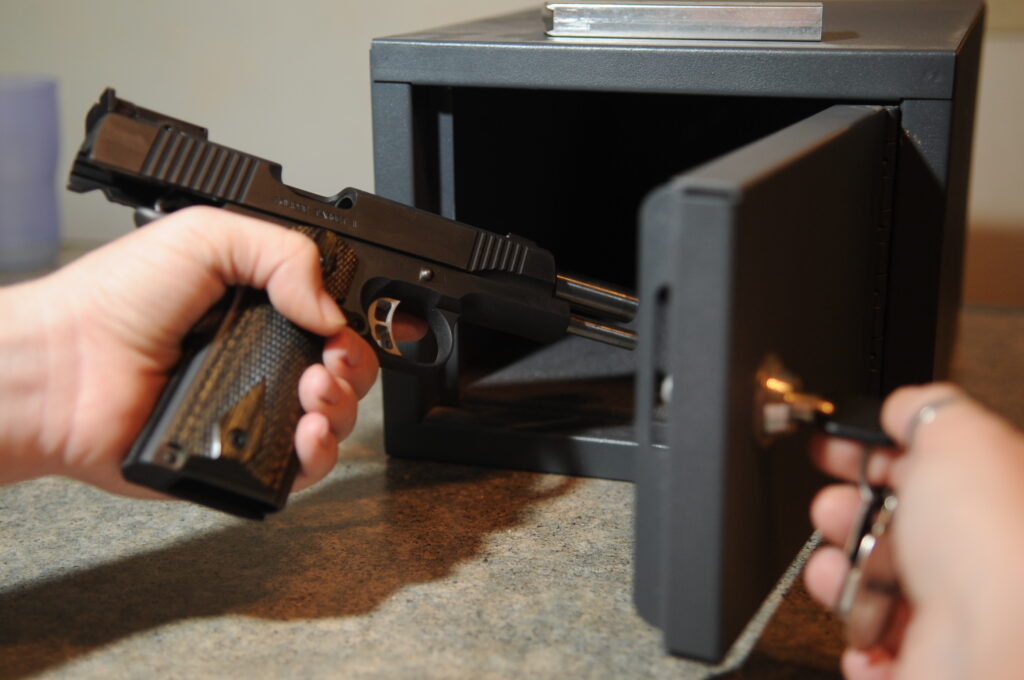
Legalities of “Warning Shots” for Self-Defense
The legality and advisability of firing warning shots in self-defense situations vary depending on the jurisdiction and the specific circumstances. Remember, bullets don’t just disappear, they always get stopped one way or another. If you’re in the home, consider what or WHO may be above you or beyond the object you’re firing into. In regards to shooting the air, the bullet has to come down sometime and it will do so at about the same speed it left the barrel.
In general, it’s important to understand that discharging a firearm, even for warning purposes, carries serious legal and safety implications. Here are some considerations:
- Legal Implications: In many jurisdictions, firing a warning shot is treated the same as firing at a person. This means you could potentially face criminal charges, including reckless endangerment or unlawful discharge of a firearm, depending on the laws in your area.
- Safety Concerns: Warning shots pose significant safety risks. A fired bullet can travel a long distance and may hit unintended targets or cause property damage. Additionally, the act of firing a warning shot may escalate the situation and increase the likelihood of violence.
- Effectiveness: Warning shots may not effectively deter an attacker and could provoke them further. In a high-stress situation, it may be difficult to accurately fire a warning shot, increasing the risk of unintended consequences.
- Legal Justification for Use of Force: In most jurisdictions, the use of force in self-defense is justified only when there is an imminent threat of death or serious bodily harm. If you have the legal right to use deadly force in self-defense, it is generally advisable to use it only as a last resort and with the intent to stop the threat, rather than to warn or intimidate.
- Alternative Options: Instead of firing warning shots, consider other options for de-escalating the situation and protecting yourself, such as verbally warning the attacker to stop, seeking cover or retreat if possible, and using non-lethal self-defense tools or techniques.
Ultimately, the decision to fire a warning shot should be made carefully and with full awareness of the legal and safety implications. It’s essential to understand the laws and regulations regarding the use of firearms for self-defense in your jurisdiction and to prioritize the safety of yourself and others in any self-defense situation. If you find yourself in a threatening situation, it’s generally best to seek to resolve it through non-violent means or by using force only as a last resort to protect yourself or others from imminent harm.
Pre-Attack Indicators
How will I know if someone is about to attack me?
There are common signs that will indicate when someone is likely going to attack you. Paying attention to visual and audible cues and maintain situational awareness is the key to protecting yourself. Do NOT ignore these indicators. Even if you are wrong about them, at least you will have stayed safe. BUT if you are correct and choose to ignore them, you WILL pay for your ignorance.
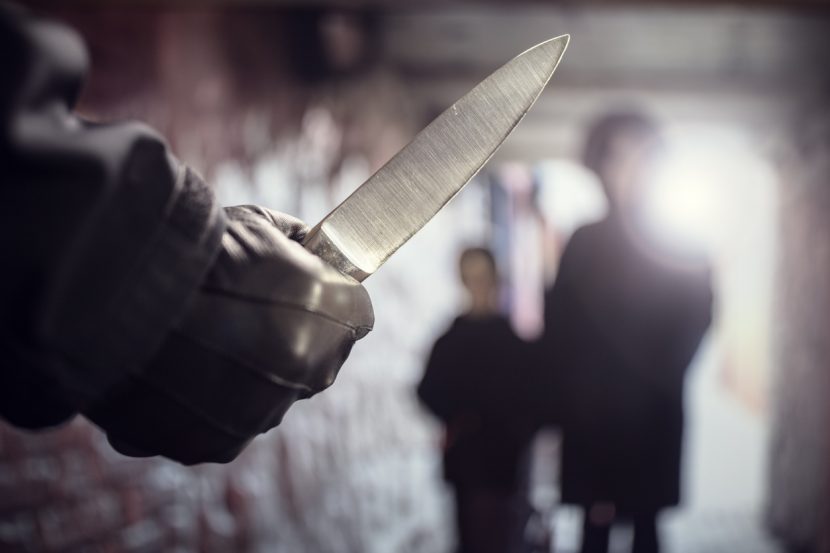
What is the MOST important aspect of preventing an attack from affecting you?
DISTANCE. Being too close to an attacker reduces your reaction time and makes the likelihood of being hit, stabbed, grabbed, taken-down, or shot very high. The further from the threat you are, the safer you are. It’s incredibly simple. With more distance comes the ability to react more appropriately to whatever they attempt. When in a situation with anyone who is potentially hostile, distance is king. The opposite is also true. If you want to be the attacker, you must “close the gap”. At such a close range, typically whoever lands the first surprise attack will dominate.
What are the signs of a pending attack?
If you cannot get to a safe distance or you are still assessing the situation, you’ll want to take note of the mannerisms they begin to display. Once you see one, it’s likely you will see others. The keys to attacking effectively are the element of surprise and intimidation. But you may definitely meet an aggressive person willing to just “jump into it”. Impulse Tactical Self-defense courses prepare you for just that scenario. Prevention is not always viable, so we teach you how to neutralize these scenarios to mitigate damage and survive.
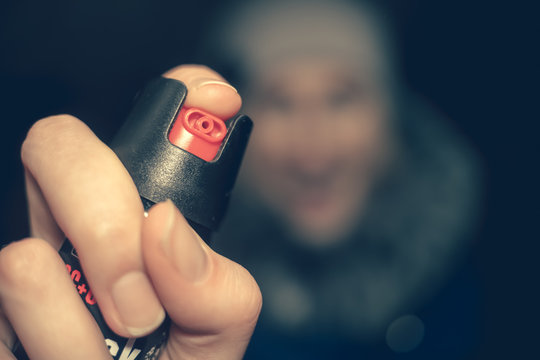
What are the pre-attack indicators?
Pre-attack indicators are behavioral cues or signs that may precede a physical assault or threatening encounter. Recognizing these indicators can provide valuable warning signals and enable individuals to take preventive action or prepare for potential self-defense situations. Here’s a list of pre-attack indicators:
- Aggressive Posturing: Aggressive body language such as clenched fists, puffed-up chest, or an aggressive stance can indicate hostile intentions.
- Intense Staring: Prolonged or intense staring, particularly with narrowed eyes or a fixed gaze, may signal potential aggression or a readiness to initiate an attack.
- Verbal Threats: Threatening language, insults, or hostile comments directed towards you or others can indicate escalating aggression.
- Invasion of Personal Space: Encroachment into your personal space, such as standing too close or blocking your path, may be a precursor to a physical confrontation.
- Unpredictable Behavior: Erratic or unpredictable behavior, including sudden changes in mood, agitation, or irrational movements, can suggest potential danger.
- Weapon Display: The display or brandishing of weapons, such as a knife, gun, or improvised weapon, is a clear indicator of imminent threat.
- Physical Signs of Agitation: Visible signs of agitation or nervousness, such as pacing, fidgeting, or clenched jaw, may indicate heightened emotional arousal and potential aggression.
- Preparation Movements: Suspicious movements suggesting preparation for an attack, such as reaching into pockets, adjusting clothing, or adopting a fighting stance, should be noted.
- Gang Mentality: Group dynamics characterized by aggressive posturing, verbal taunting, or attempts to intimidate can signal an increased risk of violence.
- Blocking Exits: Deliberate actions to block or restrict your ability to leave an area or escape can indicate hostile intent and should be taken seriously.
- Flanking Maneuvers: Covert attempts to position themselves strategically around you, such as moving to your blind spots or surrounding you, may precede an attack.
- Sudden Changes in Behavior: Abrupt changes in behavior, such as becoming overly friendly after initial hostility or attempting to lure you into a secluded area, can be red flags.
- Target Assessment: Signs of sizing you up or assessing your vulnerability, such as scanning your body, observing your movements, or making note of valuables, may precede a robbery or assault.
- Aggressive Gestures: Gestures indicating readiness to strike, such as raised fists, finger-pointing, or gesturing towards concealed weapons, are clear indicators of imminent danger.
- Facial Expressions: Hostile or predatory facial expressions, such as a clenched jaw, narrowed eyes, or a predatory grin, can signal impending aggression.
Recognizing these pre-attack indicators requires heightened situational awareness and the ability to trust your instincts. If you observe one or more of these indicators, it’s important to take immediate action to remove yourself from the situation if possible or prepare to defend yourself if necessary.
Prevention Tips for Self-Defense
The implementation of self defense tips is THE most important component of preventing a violent encounter from occurring. Becoming vigilant and keen on preventative techniques and knowledge, you will minimize your risk of being a victim of violence exponentially! Much of this can be done with little or no effort. You simply need to acknowledge and consider them.
Nobody wants to be paranoid. We do not wish for you to become paranoid, however, the more you research self-defense and see what’s possible, it’s hard not to view the world differently. Be sure to maintain that balance of light and dark. Be prepared to make the decisions needed to protect yourself and whoever you care about most. One day, you may need to do something controversial as an act of defense, especially preventative, or you may need to get physical and neutralize a threat. BE PREPARED.
At Impulse Tactical, our Self-Defense classes do not just teach the tactics of how to fight, we instruct on prevention and escape as they are often under-emphasized. The physical aspect is very important, but not the most important. It’s the stress… learning to deal with this and understand it is vital to becoming a protector, either of yourself or others. Get in on a class now and experience how vulnerable you actually are.
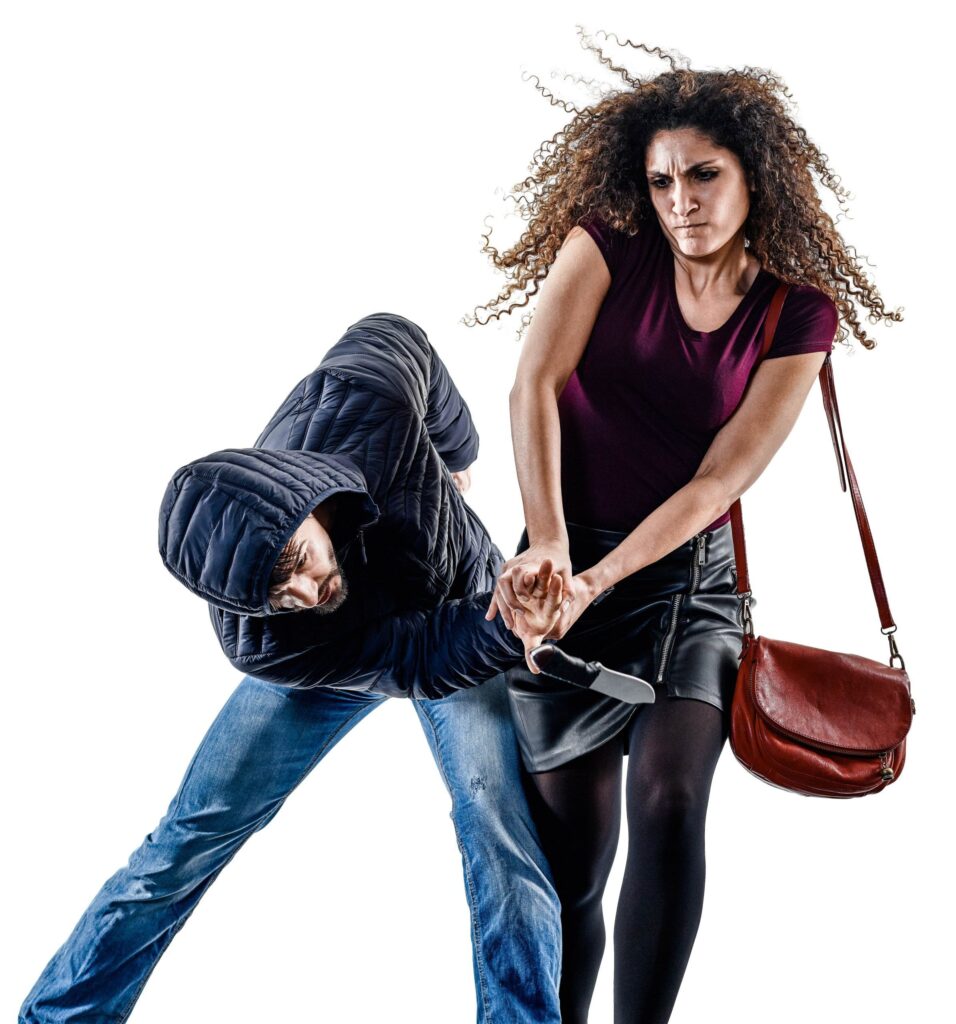
Self-Defense Tips to Consider for Every Day Prevention
- Travel Safety:
- Plan your routes in advance, opting for well-lit and populated areas.
- Avoid traveling alone, especially at night.
- Share your itinerary with a trusted friend or family member.
- Use reliable transportation methods and verify the identity of drivers (e.g., rideshare apps).
- Keep your belongings secure and avoid displaying valuables in public.
- Home Security:
- Install sturdy locks on doors and windows.
- Use motion-sensor lights to illuminate dark areas around your home.
- Keep bushes and shrubs trimmed to eliminate potential hiding spots for intruders.
- Consider installing a security system with cameras and alarms.
- Always lock doors and windows when leaving home, even for a short time.
- Personal Safety Habits:
- Stay alert and aware of your surroundings at all times.
- Trust your instincts and avoid situations or individuals that make you feel uneasy.
- Walk confidently and with purpose, making eye contact with others.
- Keep a safe distance from strangers and maintain personal space.
- Practice good posture and assertive body language to deter potential threats.
- Digital Safety:
- Be cautious when sharing personal information online, including your location.
- Use privacy settings on social media platforms to control who can access your information.
- Avoid posting about travel plans or being away from home for extended periods.
- Use strong, unique passwords for online accounts and enable two-factor authentication where possible.
- Be wary of phishing scams and fraudulent websites requesting personal information.
- Conflict Resolution Skills:
- Practice active listening and effective communication to de-escalate conflicts.
- Stay calm and composed, avoiding escalating arguments or confrontations.
- Seek compromise and find mutually beneficial solutions when conflicts arise.
- Apologize if necessary and be willing to walk away from a confrontation if it cannot be resolved peacefully.
- Use assertive language and set clear boundaries to assert your rights without being aggressive.
- Self-Defense Training:
- Enroll in self-defense classes to learn practical techniques for protecting yourself.
- Practice situational awareness and threat assessment during training sessions.
- Familiarize yourself with vulnerable points on the body and effective striking techniques.
- Practice verbal assertiveness and boundary-setting skills in simulated scenarios.
- Regularly review and reinforce learned self-defense skills to maintain proficiency.
- Emergency Preparedness:
- Develop a personal safety plan that includes escape routes and emergency contacts.
- Carry a charged mobile phone with emergency contacts programmed and accessible.
- Consider carrying personal safety devices such as a whistle, pepper spray, or personal alarm.
- Know how to access emergency services and provide relevant information quickly.
- Stay informed about local emergency procedures and resources available in your area.
- Risk Avoidance:
- Avoid high-risk situations and environments known for criminal activity or violence.
- Limit alcohol consumption and avoid recreational drug use, as they can impair judgment and increase vulnerability.
- Be cautious when accepting invitations to secluded or unfamiliar locations.
- Trust your intuition and exit situations that feel uncomfortable or unsafe.
- Choose reputable establishments and avoid walking alone in dimly lit or deserted areas.
- Physical Fitness:
- Maintain physical fitness and stamina to enhance your ability to defend yourself if necessary.
- Incorporate strength training and cardiovascular exercises into your fitness routine.
- Practice self-defense techniques regularly to improve muscle memory and agility.
- Develop flexibility and balance through stretching and yoga exercises.
- Consider martial arts or combat sports training to build confidence and physical resilience.
- Community Involvement:
- Build relationships with neighbors and community members to foster a sense of solidarity and mutual support.
- Participate in neighborhood watch programs or community safety initiatives.
- Stay informed about local crime trends and share information with others to promote awareness.
- Advocate for improved safety measures in your community, such as better lighting or increased police patrols.
- Report suspicious activity or concerns to local authorities promptly.
Implementing these specific self-defense prevention strategies can empower individuals to minimize risks and enhance their safety in various situations.
